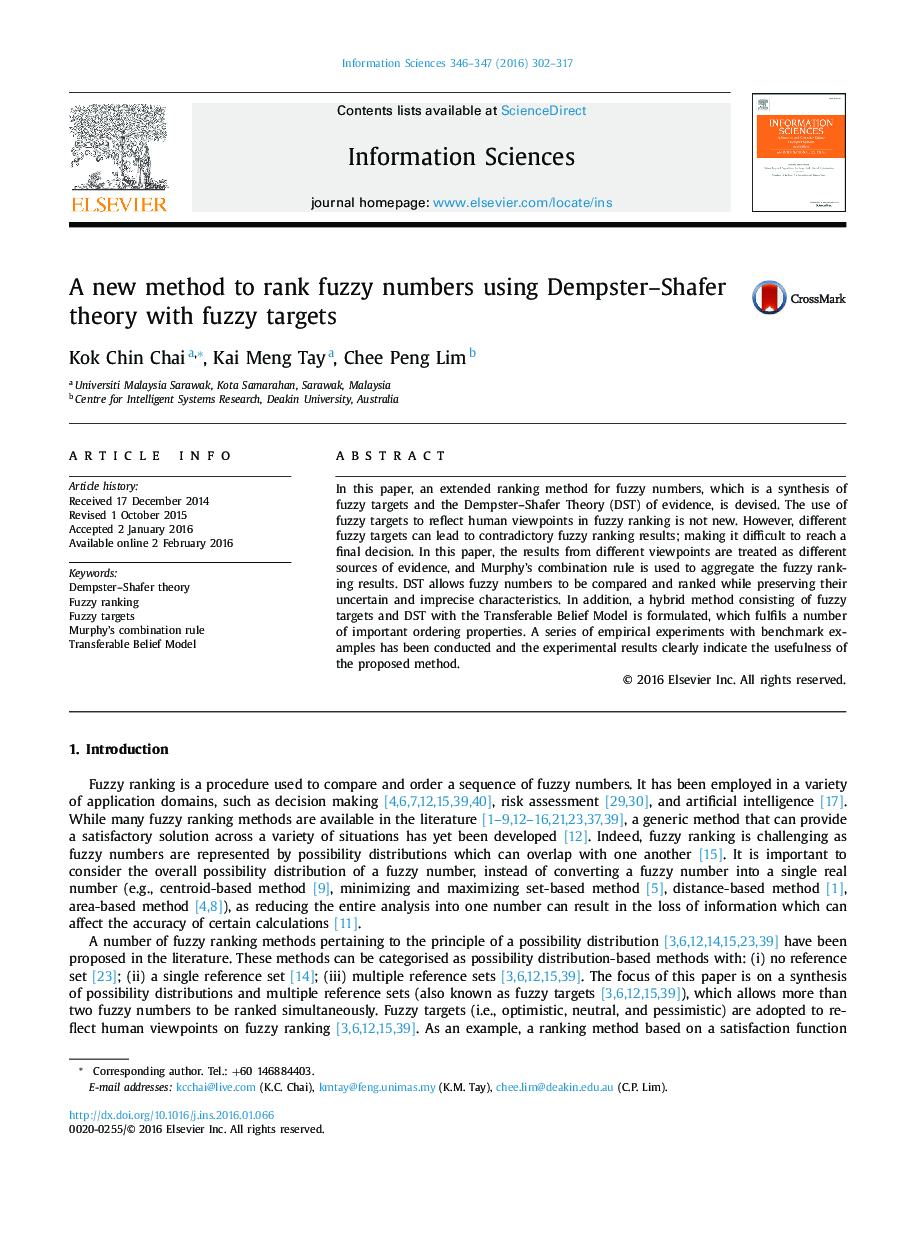| Article ID | Journal | Published Year | Pages | File Type |
|---|---|---|---|---|
| 392427 | Information Sciences | 2016 | 16 Pages |
•Fuzzy numbers are ranked using Dempster–Shafer theory (DST) with fuzzy targets.•Fuzzy targets are used to reflect human viewpoints and avoid biases in fuzzy ranking.•Fuzzy numbers are ranked with different viewpoints and with a combined viewpoint.•Transferable Belief Model is adopted to elaborate DST.•Benchmark examples are adopted for experimental studies and positive results are obtained.
In this paper, an extended ranking method for fuzzy numbers, which is a synthesis of fuzzy targets and the Dempster–Shafer Theory (DST) of evidence, is devised. The use of fuzzy targets to reflect human viewpoints in fuzzy ranking is not new. However, different fuzzy targets can lead to contradictory fuzzy ranking results; making it difficult to reach a final decision. In this paper, the results from different viewpoints are treated as different sources of evidence, and Murphy's combination rule is used to aggregate the fuzzy ranking results. DST allows fuzzy numbers to be compared and ranked while preserving their uncertain and imprecise characteristics. In addition, a hybrid method consisting of fuzzy targets and DST with the Transferable Belief Model is formulated, which fulfils a number of important ordering properties. A series of empirical experiments with benchmark examples has been conducted and the experimental results clearly indicate the usefulness of the proposed method.
